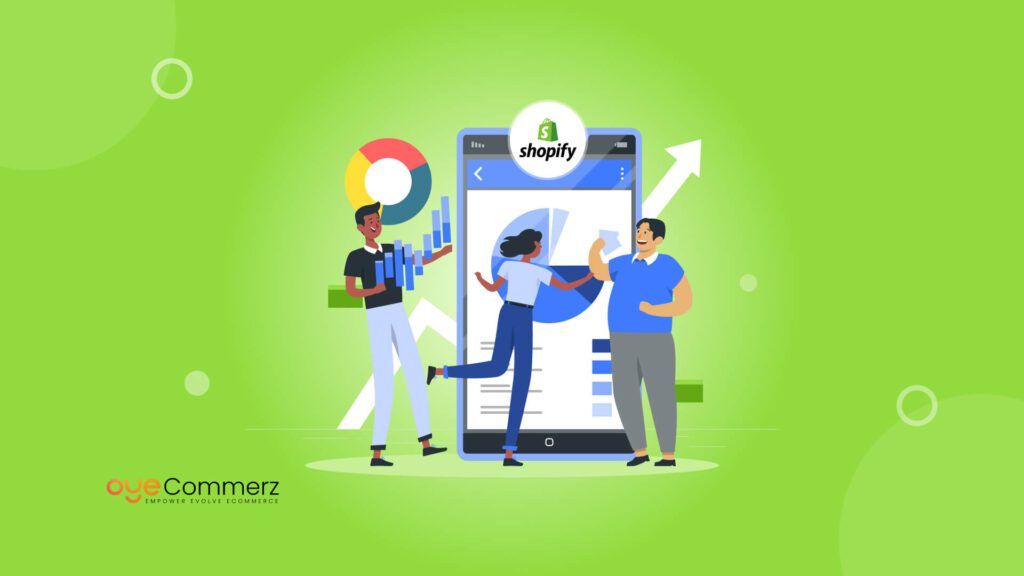For enterprise-level e-commerce businesses, traffic surges are a double-edged sword. While an influx of customers can boost sales, the inability to handle peak loads can lead to disastrous performance issues, cart abandonment, and a tarnished reputation. As such, Shopify app stress performance testing has become a mission-critical task for businesses that rely on Shopify’s app ecosystem to power their operations. Ensuring that your Shopify apps can handle sudden traffic spikes and operate under stress scenarios is key to maximizing revenue opportunities while maintaining a seamless customer experience.
In this comprehensive guide, we’ll walk you through the fundamentals of Shopify app stress testing, from preparing your system for high-demand periods to the technical strategies necessary to withstand significant load increases. By implementing robust performance testing, your business will be better positioned to handle peak traffic without compromising app stability or speed.
Table of Contents
ToggleThe Importance of Shopify App Stress Performance Testing
Understanding the Risks of Unpreparedness
Peak traffic times, such as during Black Friday, Cyber Monday, or holiday seasons, can make or break an enterprise-level e-commerce business. According to recent data, 78% of customers are less likely to return to an online store after experiencing performance issues such as slow loading times or crashes during peak periods. Yet, despite this, many companies underestimate the importance of stress testing their Shopify apps, leading to lost sales opportunities and a negative brand experience.
The risks of not conducting Shopify app stress performance testing are steep:
- Revenue loss: When apps crash or slow down, frustrated customers are quick to abandon their carts.
- Brand damage: A poor user experience during high-traffic times can result in lasting damage to your reputation.
- Missed insights: Without stress testing, businesses can’t gain a clear understanding of their apps’ thresholds, leaving them vulnerable to future disruptions.
What is Stress Performance Testing?
Stress performance testing involves simulating heavy loads or traffic spikes on your Shopify app to determine how well it performs under pressure. This proactive approach allows you to identify and address potential issues before they impact real users. For example, stress tests simulate scenarios such as:
- Sudden bursts of traffic during flash sales.
- Simultaneous actions by thousands of users (e.g., adding products to carts).
- High API call volumes during integrations with third-party apps.
These tests push your app to its limits, providing insight into potential failures and bottlenecks before they affect customer experience.
Expert Insights
“Stress testing is essential in preparing for unpredictable events, especially in a rapidly growing e-commerce environment. With more sophisticated Shopify apps, stress testing ensures that enterprises are ready for the worst-case scenarios,” says Michael Henderson, CTO of a leading e-commerce performance consultancy.
Key Metrics to Measure During Shopify App Stress Testing
Load Times and Speed Optimization
One of the key indicators of successful Shopify app stress performance testing is how well your app maintains load times during traffic spikes. Research shows that a 1-second delay in page response can result in a 7% reduction in conversions, which is significant for businesses operating at scale. Monitoring load times when an app is subjected to increased requests—whether from users browsing or making API calls—provides insight into its speed optimization.
Key metrics to monitor:
- Time to first byte (TTFB): Measures how quickly a server responds to a user’s request.
- Server response time: The time it takes for the server to process and respond to a user action.
- Time to interact (TTI): How long it takes for a user to interact with the page after the first content has loaded.
To optimize these metrics, enterprises must evaluate infrastructure scalability, database performance, and even CDN (Content Delivery Network) capabilities. It is critical to ensure that all components of the app are primed for optimal performance during load spikes.
Handling Simultaneous User Actions
The real power of Shopify app traffic spikes lies in the concurrent user activity, which tests how well an app can handle numerous actions simultaneously. During a stress test, developers should simulate common user behaviors such as:
- Adding products to carts.
- Making purchases or processing payments.
- Using search filters or advanced sorting tools.
These behaviors, when amplified under simulated stress scenarios, can expose weaknesses in the app’s processing logic. By tracking key performance metrics (e.g., request failures, timeout errors, memory usage), enterprises can pinpoint bottlenecks in workflows and remedy them before real-world traffic exposes these issues.
Scalability and Server Capacity
For enterprise-level e-commerce stores, scalability is critical. Stress tests should reveal whether your Shopify app can automatically scale to accommodate increased traffic. Evaluating your server’s capacity to handle demand is particularly important in cloud-based infrastructures where capacity needs fluctuate.
Statistics from a 2023 report indicate that businesses that proactively manage server capacity through stress testing report 25% fewer app crashes during peak events compared to those that do not. Integrating tools like AWS Auto Scaling or Google Cloud Load Balancer can ensure that your servers automatically adjust to demand fluctuations.
Strategies for Successful Shopify App Stress Testing
Simulate Real-World Scenarios
Stress performance testing is not just about hitting your app with random bursts of traffic; it’s about recreating Shopify app stress scenarios that mimic real-world events. Executing thorough and accurate simulations is essential for a meaningful performance evaluation.
Here are effective ways to simulate realistic conditions:
- Black Friday simulation: Prepare for high-volume sales events by mimicking the spike patterns that typically occur during Black Friday and Cyber Monday.
- Flash sales: Simulate sudden surges of activity caused by limited-time offers, which put enormous pressure on app functionality.
- API load testing: Test the behavior of third-party integrations and API calls during high-traffic periods.
By analyzing the data from these tests, businesses can identify their app’s breaking points and implement optimizations to handle future stress.
Utilize Advanced Testing Tools
For accurate stress testing, enterprises should invest in high-quality performance testing tools tailored for Shopify apps. Tools like Loader.io, Apache JMeter, and Gatling are widely used in the industry to simulate various load conditions and provide detailed reporting. These tools can simulate millions of users, test different protocols, and measure the app’s scalability in different stress environments.
Incorporating Cloud Infrastructure for Load Management
For apps hosted on the Shopify platform, integrating cloud solutions such as AWS or Google Cloud is key to managing traffic spikes. Cloud infrastructures allow businesses to:
- Scale up or down automatically based on real-time traffic needs.
- Distribute server loads across multiple geographic locations, reducing latency and improving response times.
- Leverage advanced analytics to forecast traffic surges and adjust server resources proactively.
As part of the stress testing process, ensure that your cloud solutions are also stress-tested to confirm they can handle the anticipated surge in demand.
Expert Commentary
“Enterprise businesses using Shopify must prioritize cloud-based load management solutions to stay competitive. Stress testing apps within these environments can prevent costly disruptions when real-world traffic spikes occur,” says Jenna Reynolds, Senior Solutions Architect at a leading cloud infrastructure firm.
Protect Your Brand and Revenue: Master Stress Performance Testing for Your Shopify Apps!
Shopify app stress performance testing is an essential component of ensuring your e-commerce business can handle unexpected traffic surges. By simulating real-world stress scenarios, analyzing key performance metrics, and leveraging advanced testing tools, you can safeguard your apps from crashes and downtime. For enterprise businesses, this means maintaining brand integrity, optimizing revenue during peak events, and delivering a seamless customer experience regardless of traffic volume.
Let's build your custom Shopify app today!
Conclusion
Are your Shopify apps ready to handle peak traffic? Ensure they’re prepared to perform under pressure by partnering with Oyecommerz. Contact us today to develop a winning stress testing strategy that will keep your apps running smoothly during high-demand periods and secure a seamless shopping experience for your customers.



